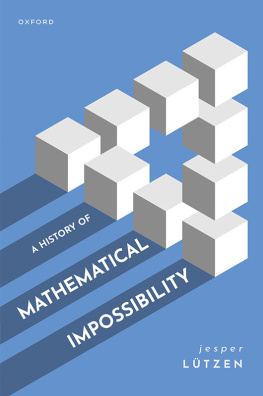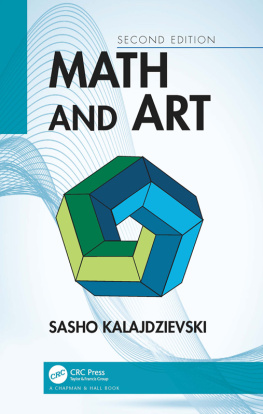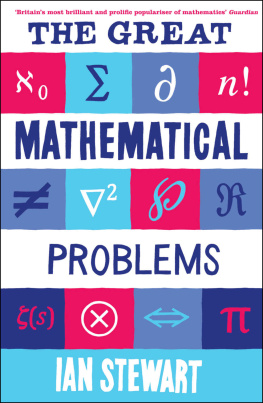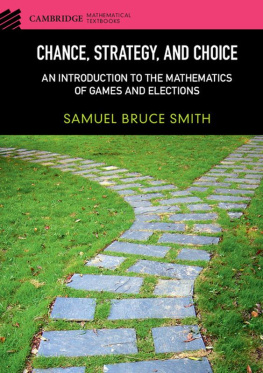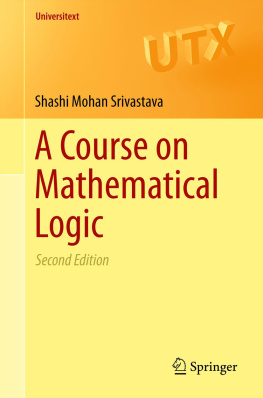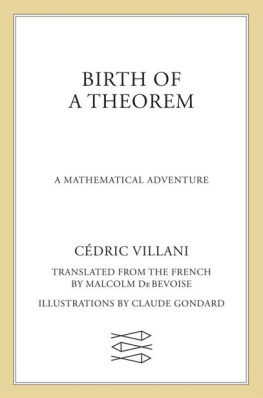How to Free Your Inner Mathematician
Praise for How to Free Your Inner Mathematician
This delightful book contains precious nuggets of mathematics rendered accessible to most by connecting them to real life and engaging the reader in artfully paced steps. What is truly unique about this book, however, is the way DAgostino infuses it with her humanity, making it as fun and instructive as it is wise.
Christophe Gol, Professor and Chair of Mathematics & Statistics, Smith College
Few things are as beautiful, fascinating and revealing about life and important to its pursuit as mathematics. Yet we have failed to teach math successfully in our schools and interest adults in exploring its wonders. We promote fear, not love. This elegantly written book makes mathematics alive and accessible, without compromise, with charm, clarity, grace and wit. This book should fall into the hands not only of all students, but all adults. Readers will not only be grateful, but will smile along the way.
Leon Botstein, Chancellor of the Open Society University Network, President of Bard College, and Conductor of the American Symphony Orchestra
This book is a great entry point for the curious student wondering about the world around them, a wonderful reference guide for the parent, a reminder for the working engineer, or an enjoyable read for anyone seeking to update their understanding. It reminds us how elegantly math helps make sense of the world and that success is in the eye of the beholder!
Joseph J. Helble, Provost, Dartmouth College
How to Free Your Inner Mathematician
Notes on Mathematics and Life
Susan D'Agostino
Great Clarendon Street, Oxford, OX2 6DP, United Kingdom
Oxford University Press is a department of the University of Oxford. It furthers the Universitys objective of excellence in research, scholarship, and education by publishing worldwide. Oxford is a registered trade mark of Oxford University Press in the UK and in certain other countries
Susan DAgostino 2020
The moral rights of the author have been asserted
First Edition published in 2020
Impression: 1
All rights reserved. No part of this publication may be reproduced, stored in a retrieval system, or transmitted, in any form or by any means, without the prior permission in writing of Oxford University Press, or as expressly permitted by law, by licence or under terms agreed with the appropriate reprographics rights organization. Enquiries concerning reproduction outside the scope of the above should be sent to the Rights Department, Oxford University Press, at the address above
You must not circulate this work in any other form and you must impose this same condition on any acquirer
Published in the United States of America by Oxford University Press
198 Madison Avenue, New York, NY 10016, United States of America
British Library Cataloguing in Publication Data
Data available
Library of Congress Control Number: 2019947641
ISBN 9780198843597
ebook ISBN 9780192581747
Printed and bound by CPI Group (UK) Ltd, Croydon, CR0 4YY
Links to third party websites are provided by Oxford in good faith and for information only. Oxford disclaims any responsibility for the materials contained in any third party website referenced in this work.
For Esteban, with whom I fell in love over conversations about mathematics
Acknowledgments
My husband, Esteban Rubens, has lifted me up when I have been down and stood at my side to celebrate every success. I am so grateful be with him in life. My children, Marco and Sophia, inspire me with their intellectual curiosity and engagement in life every day. I love being their mom.
My siblings, Jeanne Thompson and John DAgostino, have offered loving support as we searched for and found our own paths, raised our kids, and helped our parents face their ends of life. I am also grateful for my parents Maureen and Vito, my parents-in-law Delia and Miguel, my siblings Liz and Mary, and my godparents Maureen and Michael.
Melissa Bierstock has offered incredible friendship and love over decades. I also appreciate all those who offered friendship and support during important moments in my personal and mathematical journey, including Marie-Pierre Astier, Mary Backlund, Barry Balof, Betsy and Stephen Bogdanffny, Amy Buchmann, Sarah Bryant, Allison Cummings, Rachelle DeCoste, Emily Dryden, Karen Erickson, Geannina Esquivel, Michelle Guinn, Leona Harris, Annie Hill, Bonnie Marcus, Sandy Mikolaities, Shelley Morgan, Martha Parker, Paul Paquette, Daphne Ross, Corina Tanasa, and Deborah Varat.
I am indebted to those who offered feedback on my manuscript, including John DAgostino, Nancy Lord, Dave Mikolaities, John OBrien, Esteban Rubens, Sophia Rubens, and Dan Taber. Thank you to Marco Rubens for 24/7 technical help with my computer and electronic sketchpad. Thank you also to Barbara Couch, Karen Erickson, Katherine Towler, and Josh Zinn for reading an earlier version.
My schools helped shape not only who I am today but this book; thank you Bard College, Smith College, Dartmouth College, and Johns Hopkins University. Thank you also to the EDGE Program, the Council for the Advancement of Science Writing, and the Heidelberg Laureate Forum Foundation for financial and moral support.
I am indebted to my mathematician mentors, all of whom are dear to me: Carolyn Gordon, David Webb, and Tom Shemanske at Dartmouth College; Christophe Gol, Ruth Haas, Jim Henle, and Patricia Sipe at Smith College; Sylvia Bozeman at Spelman College; Rhonda Hughes at Bryn Mawr College; Ami Radunskaya at Pomona College; and Ethan Bloch, Peter Dolan, and Mark Halsey at Bard College.
Thank you to writing mentors who helped summon my own writing life: Craig Childs, Amy Irvine, Jo Knowles, Nancy Lord, Emily Mullin, Ben Nugent, Mark Sundeen, Katherine Towler, and Robin Wasserman.
I am also grateful for inspiration from New Hampshire leaders with whom I have worked to advance math and science education in the state, including HOPE Foundation President Barbara Couch, Community College System of New Hampshire Chancellor Ross Gitell, Dartmouth College Provost and Professor of Engineering Joseph Helble, New Hampshire STEM Task Force Manager Martha Parker, and University of New Hampshire Interim Provost, Vice President of Academic Affairs, and Professor of Chemical Engineering PT Vasu Vasudevan.
Uncountably infinite thanks to Commissioning Editor Dan Taber at Oxford University Press for believing in my vision for this book and to Assistant Commissioning Editor Katherine Ward for support in bringing this book to publication.
Finally, thank you to all of my former students who taught me how to teach mathematics.
of this book titled, Proceed with care, because some infinities are larger than others.
Contents
I have a confession: I dropped out of mathematics in high school after having failed a calculus exam. At the time, I assumed that my best math days were behind me. In college, I studied anthropology and film, while working on a farm milking cows in New Yorks Hudson River Valley. (No summer mathematics internships for me.) After college, I traipsed all over North and South America visiting schools and interviewing students for my alma mater . My post-college home base was on another farm with 42,000 chickens, though I also spent an extended period in an ashram studying the philosophy and practice of yoga. Throughout, I kept a secret: I pined to learn more mathematics.


